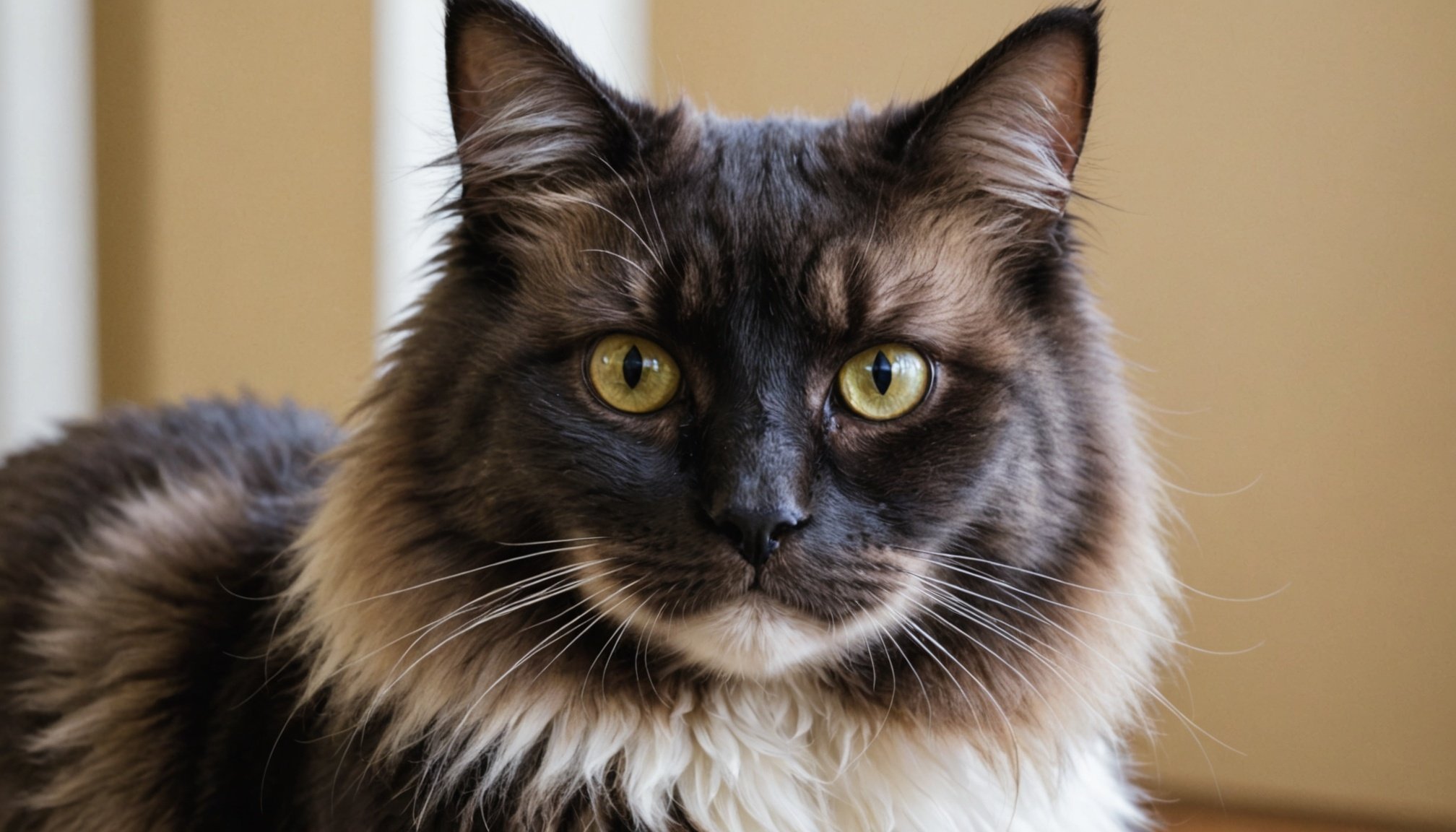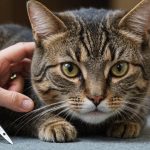Mastering Cat Care: Essential Tips for Creating a Mat-Free Grooming Routine for Your Long-Haired Feline
Understanding the Importance of Grooming for Long-Haired Cats
Grooming is an essential part of cat care, especially for long-haired felines. These beautiful cats, with their lush and silky coats, require regular attention to prevent matting, tangling, and other health issues. Here’s why grooming is crucial:
- Prevents Matting and Tangling: Long-haired cats are prone to matting and tangling, which can be painful and even lead to skin irritation. Regular grooming helps to detangle the fur, preventing these mats from forming.
- Maintains Skin Health: Grooming not only keeps the coat healthy but also ensures the skin remains free from irritation. Long-haired cats can develop skin issues if their fur is not properly maintained, as mats and tangles can pull on the skin.
- Enhances Overall Health: Grooming is a great way to check for any health issues such as fleas, ticks, or skin infections. It also helps in distributing natural oils throughout the coat, promoting healthy fur growth.
Choosing the Right Tools for Your Cat’s Grooming
The right tools are essential for a effective and comfortable grooming session. Here are some must-haves for your long-haired cat:
A voir aussi : Unlocking Your Indoor Cat”s Instinct: Tips to Boost Natural Hunting Skills for Improved Health and Happiness
Brushes and Combs
- Slicker Brush: This brush is excellent for removing loose fur and detangling mats. Its fine wire bristles reach into the undercoat, making it ideal for the initial grooming pass.
- Metal Comb: After using the slicker brush, follow up with a metal comb to ensure all tangles are removed. Pay special attention to sensitive areas like behind the ears and under the legs.
- Wide-Tooth Comb: This comb is gentler on the cat’s skin and is particularly useful for long-haired cats. It helps in detangling without causing breakage or pain.
Other Essential Tools
- Shedding Rubber Brush: This brush helps loosen surface-level fur and massages the skin, promoting healthy coat growth by stimulating blood circulation and distributing natural oils.
- De-shed Brush: During heavy shedding seasons, use a de-shed brush to reach deep into the undercoat and pull out loose fur that hasn’t naturally fallen out.
- Lint Rollers: Keep lint rollers handy to quickly pick up fur from furniture and clothing, making it easier to manage shedding around the house.
Step-by-Step Grooming Guide for Long-Haired Cats
Creating a mat-free grooming routine involves several steps that need to be followed regularly. Here’s a detailed guide:
Step 1: Prepare Your Cat
Before you start grooming, make sure your cat is comfortable and relaxed. You can begin by gently stroking your cat to help them get used to the touch.
Lire également : Gentle Techniques for Training Your Cat to Embrace Nail Clipping Without Force or Restraint
Step 2: Use the Slicker Brush
Start with the slicker brush to remove loose fur and detangle mats. This brush is effective for the initial grooming pass, lifting surface hair, and preparing the coat for deeper grooming.
Step 3: Follow Up with the Metal Comb
After using the slicker brush, follow up with the metal comb to ensure all tangles are removed. Be gentle, especially around sensitive areas like behind the ears and under the legs.
Step 4: Use the Shedding Rubber Brush
Next, use the shedding rubber brush to loosen surface-level fur and massage the skin. This step helps promote healthy coat growth by stimulating blood circulation and distributing natural oils.
Step 5: De-shed Brush for Heavy Shedding
During heavy shedding seasons, use the de-shed brush to reach deep into the undercoat and pull out loose fur that hasn’t naturally fallen out. This helps manage the bulk of the shedding.
Step 6: Finish with the Undercoat Rake
Finally, use the undercoat rake to penetrate the dense undercoat and remove any remaining loose fur without damaging the outer guard hairs. This ensures thorough grooming and reduces shedding.
Bathing Techniques for Long-Haired Cats
Bathing is an integral part of grooming, especially for long-haired cats. Here are some tips to keep in mind:
When to Bathe
Long-haired cats generally require less frequent bathing compared to short-haired cats or dogs. However, if your cat gets dirty or develops a strong odor, bathing may be necessary.
Drying Techniques
After the bath, use a towel to absorb excess water. Then, use a high-velocity dryer if available to dry the undercoat thoroughly. If not, use a regular blow dryer on a cool setting to prevent moisture buildup and skin issues.
Brushing After Bathing
Once your cat is primarily dry, brush them again to remove any remaining loose fur and to help prevent mats from forming. This step ensures the coat is thoroughly detangled and reduces shedding around the house.
Managing Shedding Around the House
Shedding is a natural process for cats, but it can be managed effectively with the right tools and habits. Here are some tips:
Use a Robot Vacuum
A robot vacuum is a great addition to keep up with daily fur fallout. Look for one with strong suction power, pet hair-specific brushes, and a large dustbin to manage shedding effectively.
Keep Lint Rollers Handy
Keep lint rollers in multiple rooms and even in your car to quickly pick up fur from furniture and clothing.
Regular Grooming Sessions
Increase the frequency of grooming sessions during shedding seasons. This ensures thorough grooming, reduces shedding, and keeps your cat’s coat healthy and manageable.
Practical Insights and Actionable Advice
Here are some practical tips and advice to make your grooming routine more effective and enjoyable for both you and your cat:
Be Patient and Gentle
Grooming can be a stressful experience for cats, especially if they are not used to it. Be patient and gentle, taking breaks if necessary to ensure your cat remains comfortable.
Make It a Bonding Experience
Grooming is a great way to bond with your cat. Use this time to talk to your cat, give them treats, and make the experience enjoyable.
Keep Your Cat’s Health in Mind
Always check for any health issues during grooming sessions. Look for signs of skin irritation, fleas, or ticks, and consult a veterinarian if you notice anything unusual.
Table: Comparing Grooming Tools for Long-Haired Cats
| Tool | Description | Best For |
|---|---|---|
| Slicker Brush | Fine wire bristles for detangling and removing loose fur | Initial grooming pass |
| Metal Comb | Wide or fine teeth for detangling and removing tangles | Sensitive areas, thorough detangling |
| Shedding Rubber Brush | Loosens surface-level fur and massages the skin | Promoting healthy coat growth |
| De-shed Brush | Reaches deep into the undercoat to pull out loose fur | Heavy shedding seasons |
| Undercoat Rake | Penetrates the dense undercoat to remove loose fur | Thorough grooming, reducing shedding |
| Lint Rollers | Picks up fur from furniture and clothing | Managing shedding around the house |
Quotes from Experienced Cat Groomers
- “Grooming is not just about keeping your home clean—it’s also a great way to bond with your cat and keep them healthy and comfortable.” – [Riverview Grooming]
- “Long-haired cats require regular grooming to prevent matting and tangling, which can be painful and even lead to skin irritation.” – [Pet Care Pulse]
Creating a mat-free grooming routine for your long-haired cat is a commitment that requires the right tools, techniques, and patience. By understanding the importance of grooming, choosing the right tools, and following a step-by-step guide, you can ensure your cat’s coat remains healthy and manageable. Remember, grooming is a bonding experience that not only keeps your cat’s fur in great condition but also enhances their overall health and well-being.
In the words of an experienced cat owner, “Every penny spent and every hour devoted to grooming my cat has been worthwhile. It’s essential to recognize that caring for a cat involves both financial and time commitments, but it’s absolutely worth it.” So, take the time to groom your cat regularly, and you will see the difference it makes in their health, happiness, and the overall cleanliness of your home.











